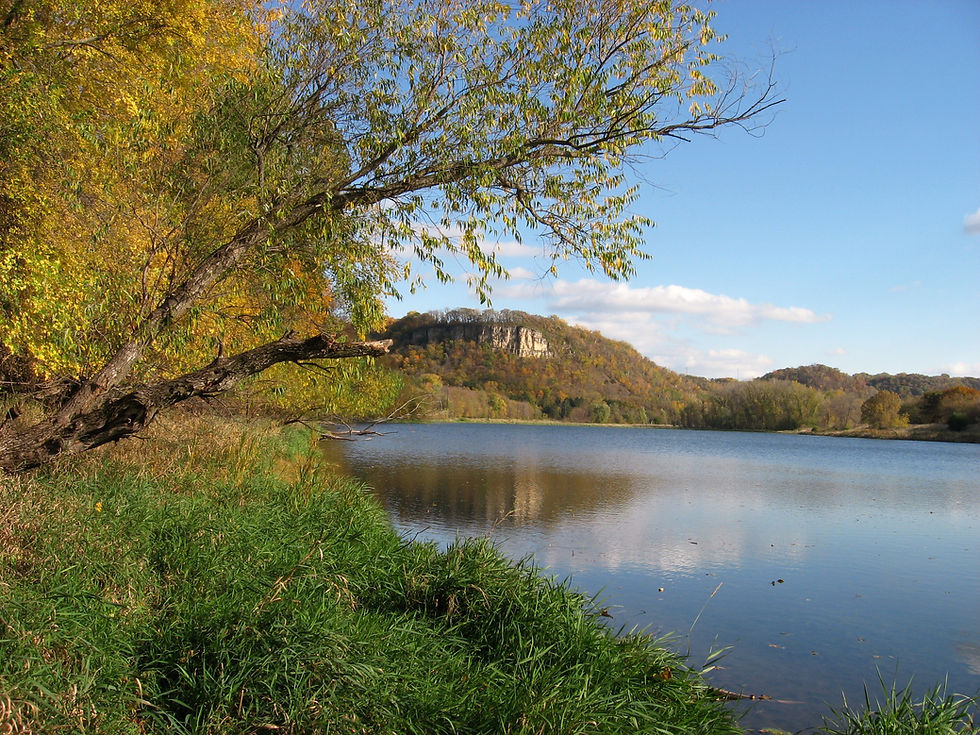No Frost Yet/Warm Weather Continues
- Bruce Ause
- Oct 20, 2016
- 2 min read

Rattlesnake Bluff as seen from Wacouta Pond
Despite the lack of a hard killing freeze yet, the fall colors are continuing to develop in Wacouta. On the north side of Wacouta pond, all the leaves from the cottonwood have already fallen. Ash and box elders are providing the yellow hues along the shoreline. Frontenac State Park estimates the fall colors have reach 50% in this area.

Red Raspberries
As of October 16th, I am still picking raspberries from my backyard patch. The growing season continues!

Native bittersweet
As fall colors develop and foliage starts dropping, the colorful bittersweet is much easier to observe. Unfortunately the highly invasive Asian bittersweet is the most predominant in our area. It is very easy to distinguish the native from the invasive species. Native bittersweet has bright red berries and are located at the end of the vine.

Invasive bittersweet
Invasive bittersweet has yellow berries and they are located along the entire vine. These highly invasive vines are spread by birds and humans collecting these vines for decorative purposes and disposing of them improperly.

Turkey Vulture
In this area, we know that a sure sign we are deep into the next season is when we can no long observe the soaring carrion eating turkey vultures. As of October 18th, I am still observing these common and very interesting birds.

Male Eastern Bluebird
In recent days, I have heard and observed may bluebirds around our yard. With the current climate change and warm winters being the new normal, it is very common to observe bluebirds all year. If bluebirds can locate a berry food supply and open water, they can be found in this area during most winter months.




Comments